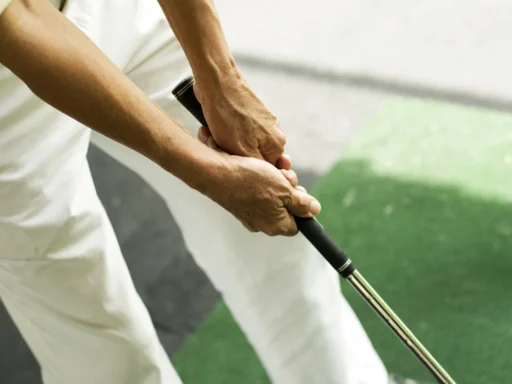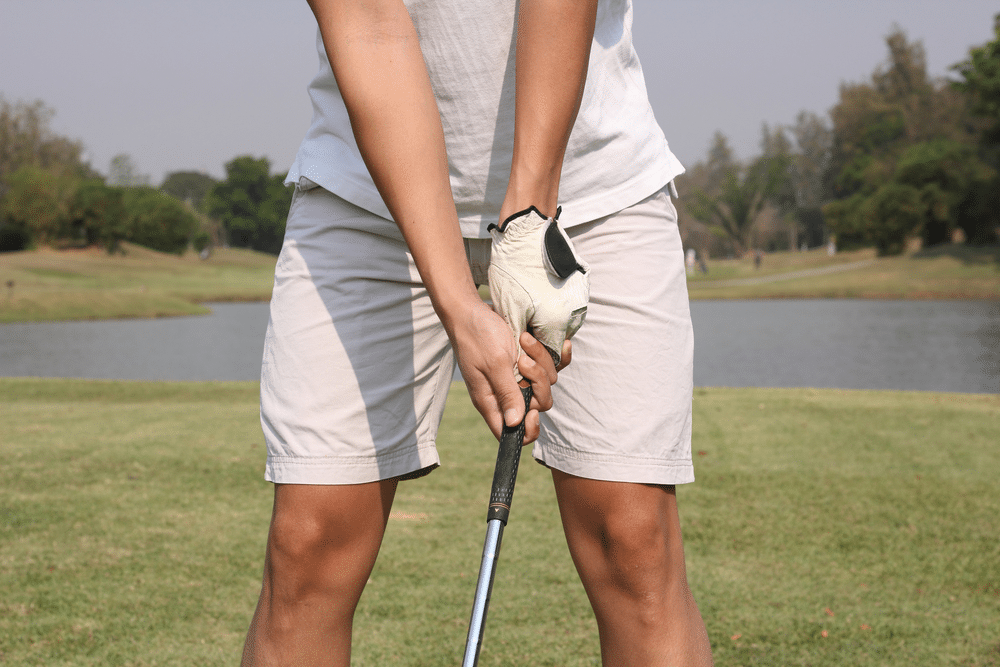
Mastering the game of golf is as much about technique as it is about strategy. and one important element that can significantly elevate your performance is your grip.. The way you hold the golf club directly impacts your control, accuracy, and power, making it a foundational aspect of your game. A proper grip allows you to deliver consistent, precise shots, whether you’re driving the ball down the fairway or sinking a challenging putt. By focusing on perfecting your grip, you lay the groundwork for a more confident and successful performance on the course. Today in this article we will discover about a classic technique favored by some of the game’s greatest players “Overlap Golf Grip”.
This grip not only enhances your control but also helps in achieving a more consistent and powerful swing. In this guide, we’ll dive into the nuances of the overlap grip, showing you how this technique can transform your game and set you on the path to golfing excellence.
What is the Overlap Golf Grip?
The overlap grip in golf, also known as the Vardon grip, was popularized by the legendary golfer Harry Vardon. This grip involves placing the pinky finger of your trailing hand over the space between the index finger and middle finger of your lead hand. This creates a secure connection between both hands, allowing them to work together more effectively during your golf swing.
The overlap grip in golf is ideal for players with small hands as it provides a firm hold on the golf club without requiring the fingers to wrap entirely around the grip. This grip ensures that both hands remain connected throughout the swing, offering better control and a more unified movement.
How to Execute the Overlap Grip
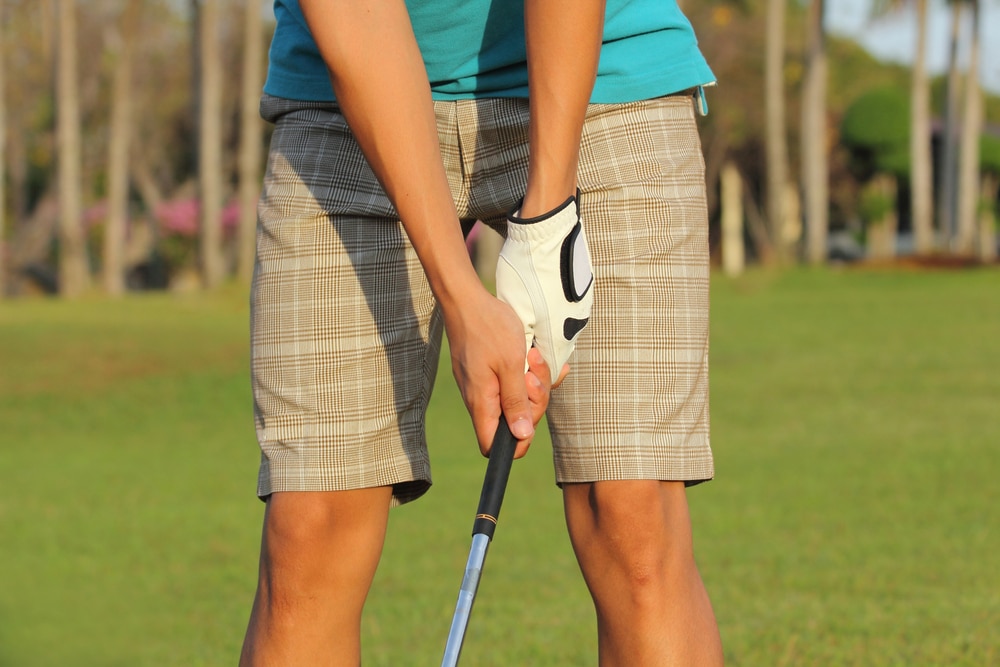
Mastering the overlap grip in golf requires attention to detail and proper technique. Here’s a step-by-step guide to help you execute the overlap grip effectively:
Start with the Lead Hand: Begin by positioning your lead hand (left hand for right-handed golfers and right hand for left-handed golfers) on the golf club. The golf grip should rest diagonally across your fingers, starting from the base of your index finger and running through the middle of your palm. The left hand should be firm but not too tight, ensuring you can feel the club while maintaining control.
Position the Trailing Hand: Once your lead hand is securely in place, position your trailing hand below it. The pinky finger of your trailing hand should rest on top of the gap between the index finger and middle finger of your lead hand. This overlapping golf grip connects both hands and helps them work together during the swing.
Check the Alignment: Ensure that the V-shape formed between your thumb and forefinger on both hands points towards your lead shoulder. This alignment helps you maintain proper wrist action and prevents excessive wrist movement during the swing.
Maintain Grip Pressure: The key to a successful overlap grip in golf is to maintain consistent grip pressure throughout the swing. Too much pressure can lead to tension and restrict your movement, while too little can cause the club to slip. Aim for a firm but relaxed grip that allows for smooth wrist action.
Practice Your Swing: With the overlap golf grip in place, practice your full swing to get comfortable with the technique. Pay attention to how your hands work together and how the grip influences your control and accuracy.
Benefits of the Overlap Golf Grip
The overlap golf grip offers several advantages that make it a popular choice among golfers of all skill levels:
Enhanced Control
The overlap grip in golf allows for better control of the golf club by ensuring both hands work together as a unit. This unified movement reduces the chances of the club twisting during the swing, leading to more accurate shots.
Improved Consistency
By connecting both hands, the overlap grip in golf promotes a more consistent swing. This consistency is crucial for developing a reliable and repeatable swing that produces consistent results on the course.
Reduced Tension
The overlap grip encourages a more relaxed grip, reducing tension in your hands and wrists. This relaxation translates to smoother swings and better clubhead speed, leading to greater distance and accuracy.
Adaptability for Different Hand Sizes
The overlap grip in golf is versatile and can be adapted to suit players with small hands or larger hands. This adaptability makes it a great option for golfers of all hand sizes, including those who may struggle with other grips like the interlocking grip or ten finger grip. 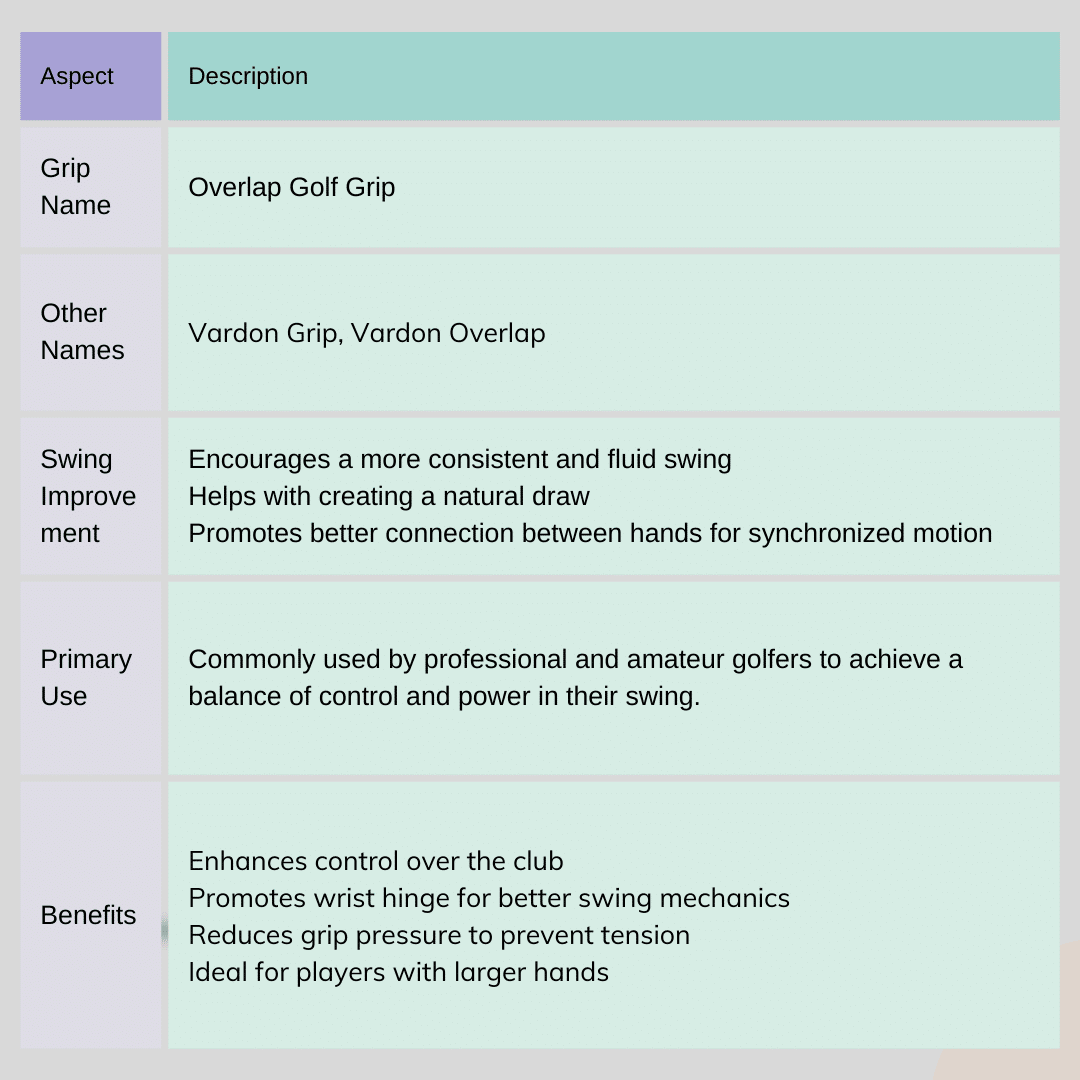
Comparing the Overlap Grip with Other Grips
While the overlap grip is widely used, it’s important to understand how it compares to other popular grips like the interlocking grip and the ten finger grip (also known as the baseball grip).
Overlap vs. Interlocking Grip
The interlock grip involves intertwining the pinky finger of your trailing hand with the index finger of your lead hand. This grip provides a secure connection between both hands. It is favored by golfers with small hands or those who prefer a tighter connection. However, the overlap golf grip offers more flexibility and is often preferred by players who want a more relaxed grip with better wrist action.
Overlap vs. Ten Finger Grip
The ten-finger grip, or baseball grip, involves placing all ten fingers on the golf club without any overlap or interlocking. This grip is often used by beginners or players with weaker hands, as it provides maximum contact with the club. However, the overlap golf grip is generally considered superior for players seeking better control and consistency, as it promotes a more unified hand action during the swing.
Variations of the Overlap Grip
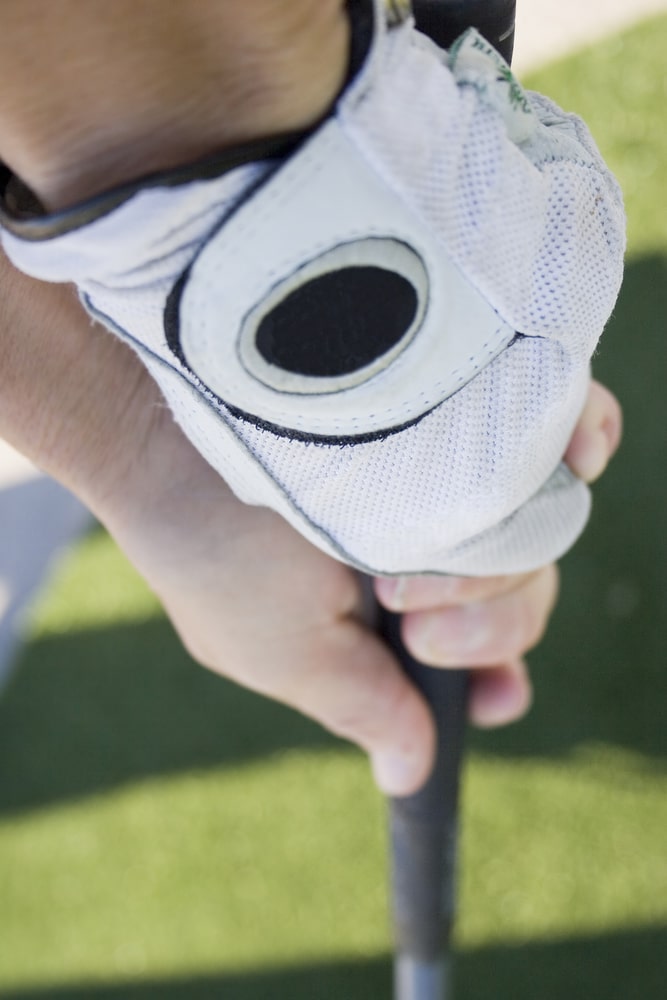
While the traditional overlap golf grip is the most common, there are several variations that golfers can experiment with to find the best fit for their swing:
Reverse Overlap Golf Grip: The reverse overlap grip is more commonly used in putting, but some golfers use it for their full swing. In this variation, the index finger of the lead hand overlaps the pinky finger of the trailing hand. This grip can provide additional stability and reduce excessive wrist movement during the swing.
Double Overlap Golf Grip: The double overlap golf grip involves overlapping both the pinky finger and ring finger of the trailing hand over the index finger and middle finger of the lead hand. This grip provides even more connection between the hands and can offer added control for players who struggle with consistency.
Common Mistakes with the Overlap Grip
While the overlap grip is relatively easy to learn. There are some common mistakes that golfers should be aware of:
Too Much Grip Pressure: One of the most common mistakes is applying too much pressure with the pinky finger of the trailing hand. This can lead to tension in the hands and wrists, negatively affecting your swing. Remember to keep your grip pressure firm but relaxed.
Poor Hand Alignment: Improper hand alignment can lead to inconsistent shots and reduced control. Make sure the V-shapes formed by your thumbs and forefingers are pointing towards your lead shoulder.
Overlooking the Role of the Trailing Hand: The trailing hand plays a crucial role in the overlap golf grip, and neglecting its position can lead to a lack of control. Ensure that your trailing hand is properly positioned and connected to your lead hand throughout the swing.
Tips for Perfecting the Overlap Golf Grip
To get the most out of the overlap golf grip, consider these tips:
Practice Regularly: The key to mastering the overlap golf grip is consistent practice. Spend time on the driving range working on your grip and paying attention to how it influences your swing.
Seek Professional Guidance: If you’re struggling to perfect the overlap golf grip, consider seeking advice from a golf instructor. They can provide personalized tips and adjustments to help you improve your grip and overall game.
Experiment with Variations: Don’t be afraid to experiment with variations of the overlap golf grip to find what works best for you. Whether it’s the reverse overlap grip or the double overlap grip. Finding the right fit can make a significant difference in your performance.
Conclusion
The overlap golf grip is a powerful technique that can help golfers of all skill levels improve their swing. This grip offers enhanced control, consistency, and power by connecting both hands and promoting a unified movement. Whether you’re a beginner or an experienced golfer. Mastering the overlap grip can take your game to the next level.
Remember to pay attention to your grip pressure, hand alignment, and the role of your trailing hand. With regular practice and a focus on proper technique. The overlap grip can become a valuable tool in your golfing arsenal. Whether competing on the course or enjoying a casual round with friends. This grip can help you achieve better results and more enjoyable rounds.


